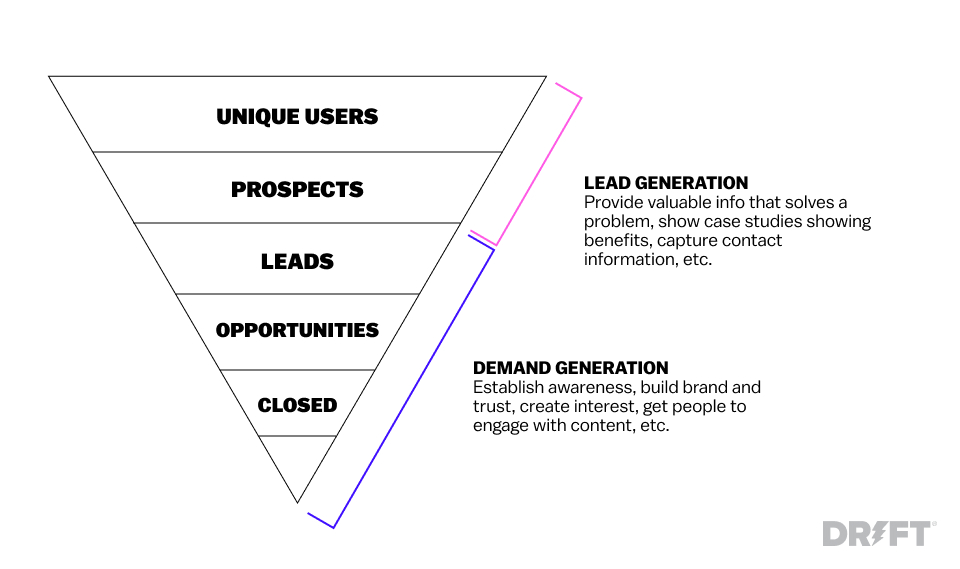Demand harvesting focuses on converting existing demand into immediate sales, while demand generation aims to create new demand through marketing efforts. Both strategies are crucial for driving business growth and maximizing revenue potential.
By understanding the key differences between demand harvesting and demand generation, businesses can effectively tailor their marketing tactics to suit specific objectives and target audiences. Demand harvesting involves capturing and capitalizing on existing consumer interest, often through targeted promotions or limited-time offers.
On the other hand, demand generation focuses on creating brand awareness, educating potential customers, and nurturing leads to eventually convert them into loyal buyers. Both approaches play complementary roles in a comprehensive marketing strategy, working together to drive sales and expand market reach. Understanding the nuances of demand harvesting and demand generation can help businesses optimize their marketing efforts and achieve sustainable growth in a competitive marketplace.
Credit: www.stukent.com
Key Differences
Both demand harvesting and demand generation are marketing strategies aimed at driving sales and revenue. However, these approaches differ significantly in their definition and approach. Understanding these key differences is crucial for businesses looking to optimize their marketing efforts. In this section, we will delve into the definitions of demand harvesting and demand generation, as well as their respective approaches.
Definition
Demand Harvesting: Demand harvesting refers to capturing existing demand for a product or service by strategically targeting potential customers who are already actively searching or ready to make a purchase decision. It involves capitalizing on immediate opportunities and converting them into sales, thereby maximizing revenue in the short term.
Demand Generation: Demand generation, on the other hand, focuses on creating and nurturing demand for a product or service among a wider audience. This strategy aims to generate interest and awareness about the offering, ultimately guiding potential customers through the sales funnel and converting them into loyal customers in the long run.
Approach
Demand Harvesting: The approach to demand harvesting revolves around identifying and targeting potential customers who are actively showing purchase intent. This can be achieved through various tactics such as search engine optimization (SEO), pay-per-click ads, and targeted email marketing. By using these methods, businesses can directly tap into the existing demand and convert it into sales quickly and efficiently.
Demand Generation: Unlike demand harvesting, demand generation takes a more holistic and proactive approach. It involves creating brand awareness, educating the target audience, and building relationships with potential customers over time. Demand generation efforts may include content marketing, social media campaigns, webinars, and other engagement strategies. The primary goal is to attract, engage, and nurture leads, guiding them through each stage of the buyer’s journey.
Demand Harvesting
Demand Harvesting is a crucial strategy for businesses to capture existing demand for their products or services, creating immediate revenue streams. Unlike demand generation, which focuses on creating awareness and interest from potential customers, demand harvesting involves capitalizing on existing demand through targeted marketing and sales efforts.
Purpose
The purpose of demand harvesting is to efficiently capitalize on existing demand, converting leads and prospects into customers while generating immediate sales revenue. This approach targets individuals or companies already expressing interest or actively seeking solutions, making it essential for companies seeking short-term growth.
Strategy
The strategy behind demand harvesting involves identifying and targeting high-potential prospects who are already in the purchase consideration stage. Leveraging customer data, companies strategically deploy focused marketing and sales efforts to prompt immediate action, driving conversions and revenue. This may include personalized outreach, limited-time offers, and targeted advertising to prompt quick decision-making.
Demand Generation
Demand Generation is the process of creating awareness and interest in a company’s products or services to drive future demand.
Goal
The primary goal of demand generation is to build relationships with potential customers and nurture them through the sales funnel.
Tactics
- Content marketing: Create valuable content to attract and engage prospects.
- Social media: Utilize platforms to reach a wider audience.
- Email campaigns: Send targeted emails to generate leads.
Effectiveness Comparison
When comparing Demand Harvesting and Demand Generation, it is essential to analyze their effectiveness in driving sales and revenue. Understanding the metrics and success factors of each strategy can provide valuable insights for businesses.
Metrics
Demand Harvesting involves targeting prospects ready to make a purchase, leading to shorter sales cycles and higher conversion rates. Metrics focus on immediate results and ROI.
Success Factors
In Demand Generation, the goal is to create brand awareness and nurture leads over a longer period. Success factors include content engagement, lead quality, and customer retention.
Challenges And Considerations
When strategizing for demand harvesting or demand generation, it’s crucial to consider the challenges and make informed decisions. Understanding the market dynamics, effective resource allocation, and addressing relevant considerations are pivotal for achieving sustainable growth and maximizing ROI.
Market Dynamics
Market dynamics play a pivotal role in determining the success of demand harvesting or demand generation efforts. Fluctuating consumer preferences, competitive landscape shifts, and economic conditions are vital factors that influence the market dynamics. Adapting to these dynamic shifts while effectively aligning the strategies is essential for achieving the desired outcomes.
Resource Allocation
Efficient resource allocation is a critical consideration when choosing between demand harvesting and demand generation. Utilizing budgets effectively, identifying the right channels, and aligning resources with the target audience are imperative for success. Striking the right balance between short-term results and long-term sustainable growth is key to optimizing resource allocation.

Credit: www.themxgroup.com

Credit: www.drift.com
Frequently Asked Questions Of Demand Harvesting Vs Demand Generation
What Is The Difference Between Demand Generation And Demand Capture?
Demand generation focuses on creating awareness and interest in a product or service, while demand capture aims to convert potential customers into actual buyers. Demand generation builds a customer base, while demand capture targets those ready to make a purchase.
What Is The Difference Between Demand Generation And Demand Creation?
Demand generation focuses on creating awareness and interest in a product or service to drive customer engagement. Demand creation, on the other hand, goes beyond awareness to actively influencing and persuading customers to make a purchase or take a specific action.
What Is The Difference Between Demand Generation And Demand Fulfillment?
Demand generation focuses on creating interest and awareness, while demand fulfillment centers on fulfilling existing needs. Both aim to drive sales and revenue growth.
What Is The Meaning Of Demand Generation?
Demand generation is the process of creating interest in a product or service to attract potential customers.
Conclusion
In a nutshell, demand harvesting and demand generation both play pivotal roles in a company’s marketing strategy. By understanding the nuances of each approach, businesses can effectively leverage both tactics to drive growth and capture market opportunities. With a comprehensive understanding of these two methods, companies can optimize their marketing efforts and align them with customer demand to achieve sustainable success.




